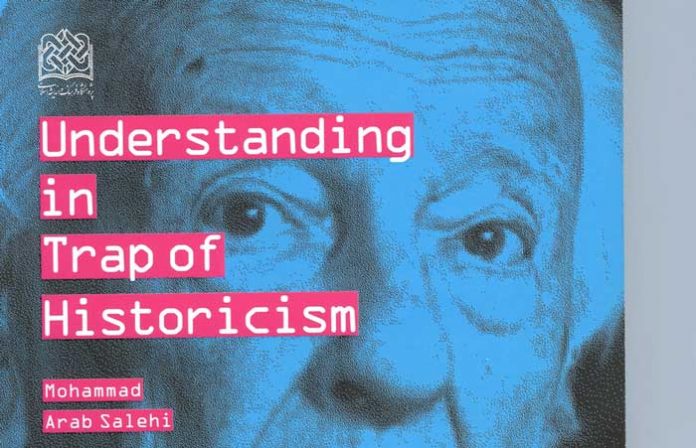This book is presented as “understanding in Trap of Historicism” in three sections and ten chapters. The first section discusses historicism in general and includes four chapters. The definitions of historicism are expressed from different sources and viewpoints in its first chapter. These descriptions speak of changes of the meaning of historicism from time to time. The second chapter explains in detail, the antecedent and the origin of historicism, its coming to existence, its vogue, and its transformation to an epistemological perspective, until decline of the historical viewpoints. The varieties of historicism from Hegel to now are explained in third chapter; six stages are accounted and the position of Gadamer in the tradition of historicism is determined. The fourth chapter includes the objections of two critic of historicism, “Roy Closer” and “Karl Page” and brings up their general critiques of basis of historicism. At the end of this chapter, the pragmatism of R. Rorty that tries to rescue historicism from whirlpool of objections, is criticized.
Second section contains two chapters. The first chapter discusses in brief reflections and the ideas of two Gadamer’s precursors, “Dilthey” and “Heidegger”, because Gadamer’s ideas are influenced by them. Gadamer’s ideas that connect to historicity of understanding are explained in detail in eight original issues in chapter two of this section.
Third section of the book propounds a critique of historicity of understanding in Gadamer’s view in four chapters. The contradiction and self-refuting of Gadamer’s claim is discussed in chapter one. Despite of Gadamer’ denial and his students and commentators, the issue of relativism and relativity of knowledge in Gadamer’s philosophical hermeneutics is proved in chapter two. The accusation of subjectivism in Gadamer is examined in third chapter. Final chapter presents more than twenty foundational objections in variety cases to Gadamer’s ideas.




